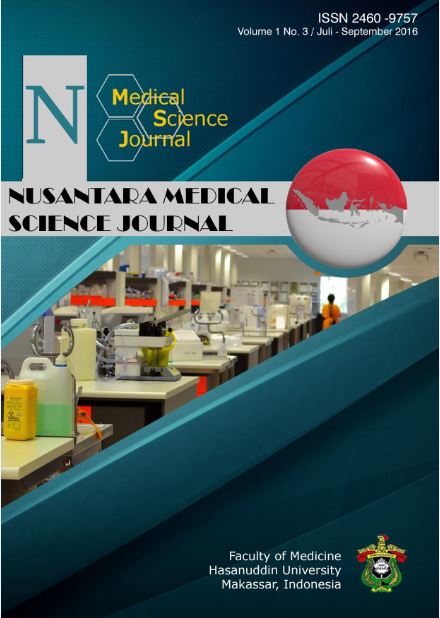CONTRIBUTION OF INFLAMMATION PROCESS (hsCRP LEVELS) IN MIGRAINE DURING ICTAL PHASE
DOI:
https://doi.org/10.20956/nmsj.v1i3.2225Abstract
ABSTRACT
Introduction: C-reactive protein (CRP), an acute phase protein and a marker of inflammation,
has been associated with the risk of cardiovascular disease. CRP has also been suggested to
be abnormal among migraineurs, possibly due to repeated vascular inflammation. Methods:
This case-control study was conducted in Wahidin Sudirohusodo General Hospital, Makassar,
Indonesia, from June 2013 to January 2014. The aim of this study is to investigate the role of
inflammation in the pathophysiology of an ictal and interictal period of migraine. A t otal of 82
patients participated in this study [16 males (19.5%) and 66 females (80.5%)]. The age of ictal
period patients range between 19-57 years old (median 28, mean 29.54 ± 8.92) and interictal
period patients range between 20-48 years (median 26, 28,90 ± 7,91). Results: This study
showed mean hs-CRP level was significantly higher in the ictal period compared to interictal
period of migraine (6.64 vs 1.87 mg/L). hs-CRP >3mg/L (high risk of cardiovascular event) was
more common in ictal (78.3%) compared to interictal patients (21,7%), while hs-CRP <1mg/L
(low risk of cardiovascular event) was more common in interictal (64.9%) compared to ictal
period patients (35.1%) (OR=6.646). The contribution of hs-CRP to the ictal period of a migraine
was 17.2%. Conclusion: This study reinforces the view that inflammation process
plays some roles in the pathophysiology of a migraine, especially in the ictal period.
Keywords: hs-CRP, migraine, ictal.









